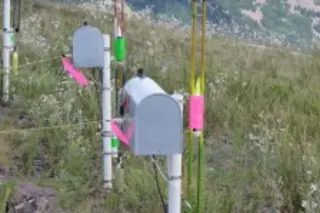Makeshift rocket launchers on South Baldy Peak. Photo by George Johnson. When I was writing Fire in the Mind, the book this blog is named after, I almost included a chapter about lightning. One of my aims in the book was to explore the edges of science's map of the world, and I was fascinated that something as commonplace as a thunderstorm remains so little understood. In the end the science of lightning didn’t make it into my book, and I didn’t take up the subject again until years later when National Geographic asked me to write the story about Tim Samaras, the lightning chaser I described in my previous post. It was only then that I got to spend time at the Langmuir Laboratory for Atmospheric Research on South Baldy Peak and witness a spectacular experiment. It is the nature of journalism that some of the people who help ...
Artificial Lightning
Discover the thrilling world of lightning chaser Tim Samaras at the Langmuir Laboratory for Atmospheric Research.
More on Discover
Stay Curious
SubscribeTo The Magazine
Save up to 40% off the cover price when you subscribe to Discover magazine.
Subscribe













